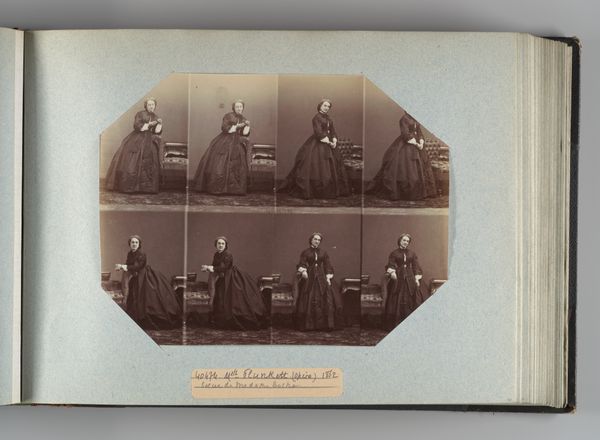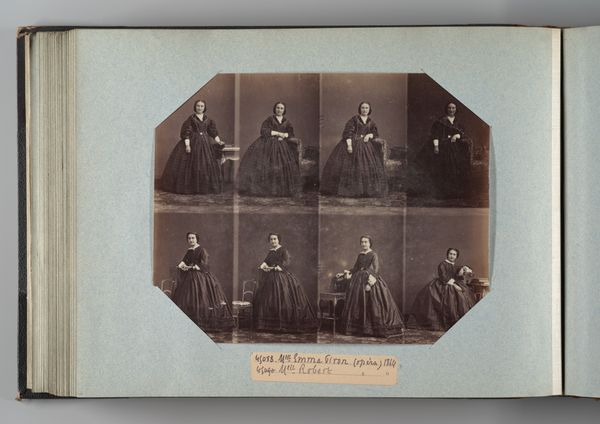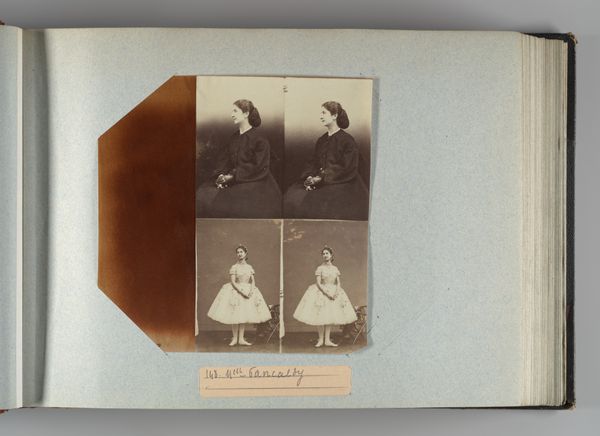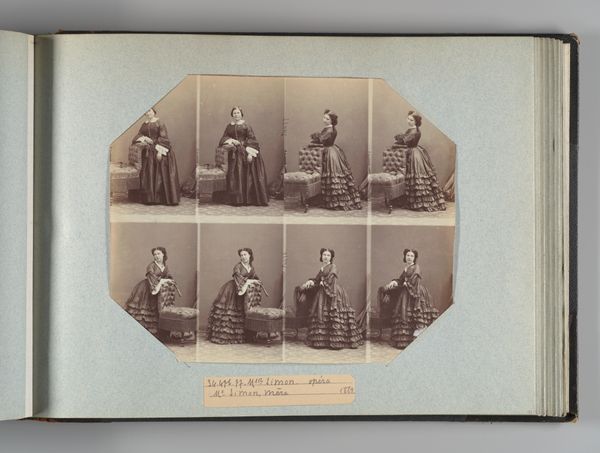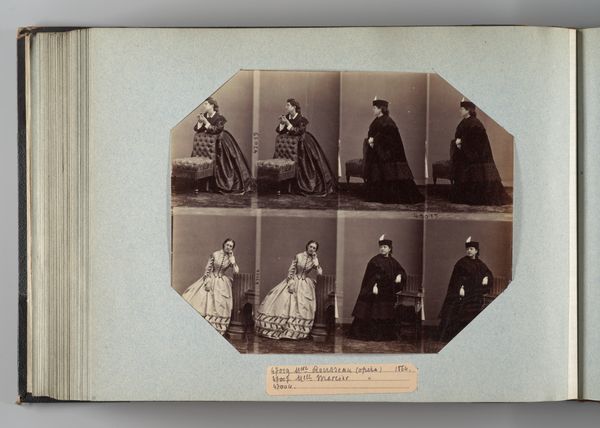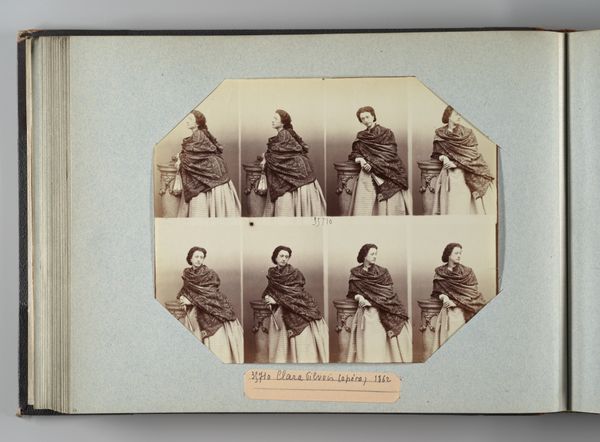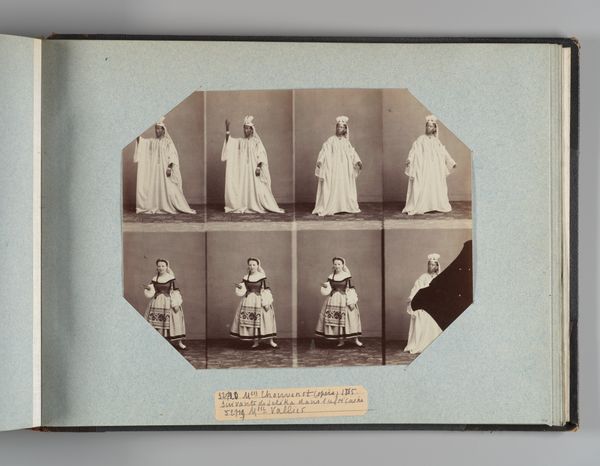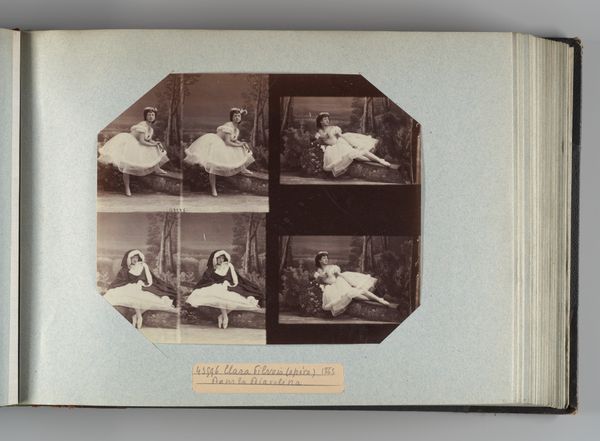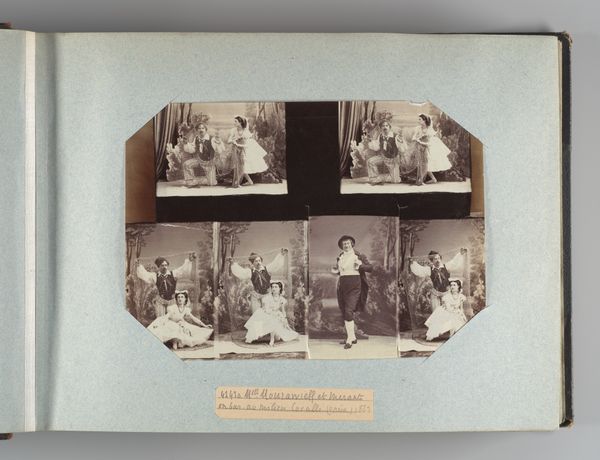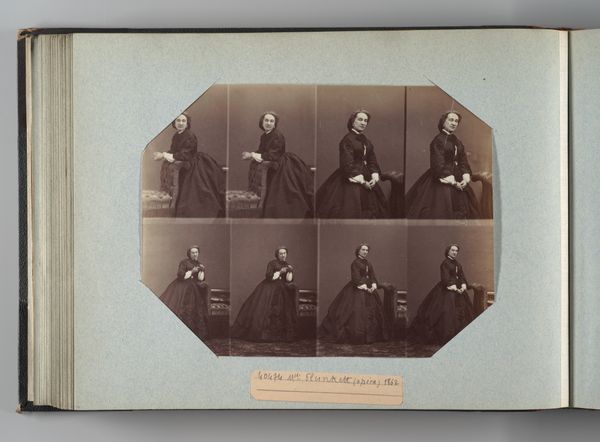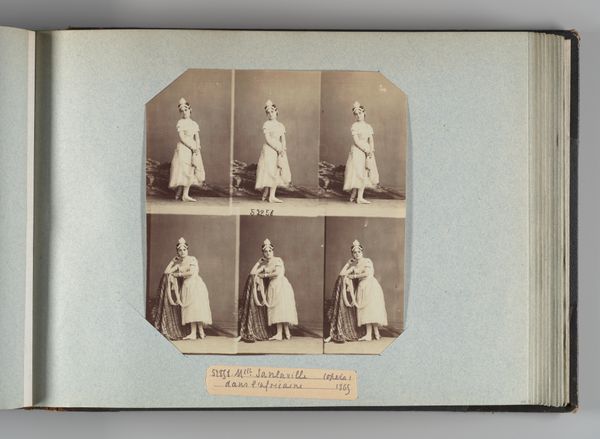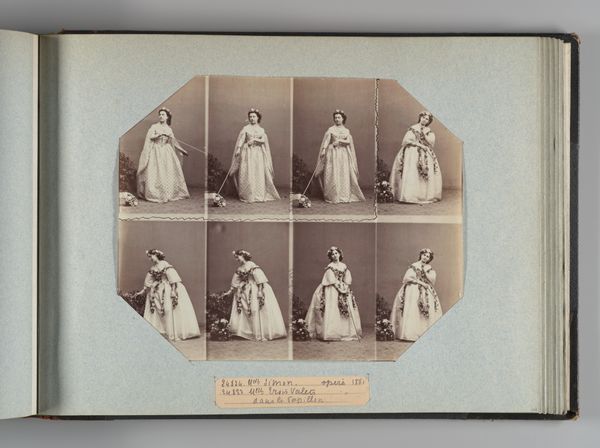
photography, albumen-print
#
portrait
#
photography
#
albumen-print
Dimensions: Image: 7 3/8 × 9 1/4 in. (18.8 × 23.5 cm) Album page: 10 3/8 × 13 3/4 in. (26.3 × 35 cm)
Copyright: Public Domain
Curator: André-Adolphe-Eugène Disdéri's 1861 albumen print, titled "Petipa," offers a fascinating glimpse into the world of 19th-century portraiture. It’s currently housed at the Metropolitan Museum of Art. Editor: Immediately, I’m struck by the seriality. It's like a proto-cinematic strip. And those subdued sepia tones… almost melancholic. What do you make of that multiple framing? Curator: Disdéri, a pioneer in the carte-de-visite format, democratized portraiture. Here, it appears we see Petipa both posed intimately with a woman and separately. It’s a study in presentation, how identities are constructed and viewed. The albumen print allows for great detail too. Editor: Precisely. The way she's draped behind him in those top frames is striking; I can only imagine what those interactions must signify when seen in their full social and power structures. What are they reading in all those images? His status would afford both subjects very different reception as performers of those roles, even in images for a family album. Curator: And we shouldn’t dismiss how albums displaying those images also participated in the shaping of public perceptions about gendered societal roles and private partnerships. A seemingly innocent family photo plays into much broader conversations! This piece really opens the discussion up. Editor: Yes, that tension between intimacy, access, and carefully controlled presentation is so intriguing to think about. We might see them in private roles in some settings but very public ones elsewhere! The political economy of performance in a bourgeois home... fascinating. Curator: Absolutely. Photography's rise intersects powerfully with class, performance and how it was all perceived in public culture. Disdéri's ‘Petipa’ offers a window into these very complicated intersections, don’t you think? Editor: I think this shows me why engaging art isn’t just about understanding a past vision but about decoding the structures in images of gender, status, and the gazes—the ways we see others, ourselves, or want to be seen by them.
Comments
No comments
Be the first to comment and join the conversation on the ultimate creative platform.
